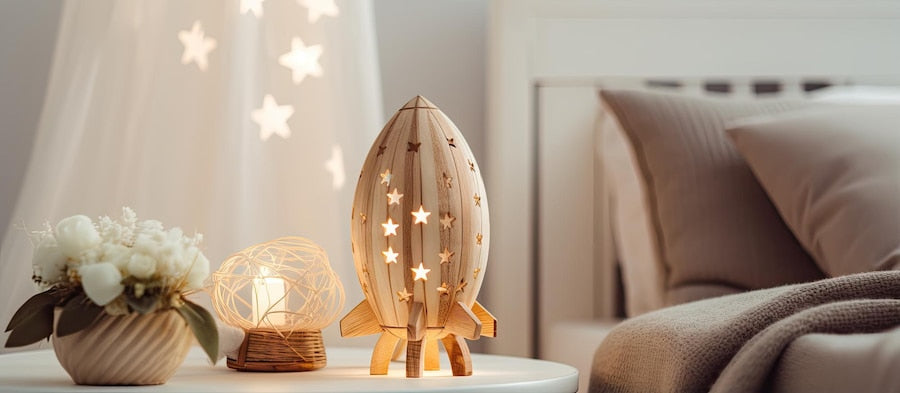
How a Proper Night Light Can Help Your Child Sleep Better
Share
Have you ever wondered why your child struggles to fall asleep or wakes up frequently at night? Many parents overlook the importance of a well-lit sleeping environment. A proper night light can transform bedtime from a battle into a peaceful routine, ensuring that your child gets the rest they need to grow and thrive. But what makes a night light "proper," and how does it impact your child’s sleep? Let’s explore.
Why Sleep Quality Matters for Children
Sleep is the foundation of a child’s development. During deep sleep, their bodies grow, immune systems strengthen, and brains process the day’s learning. Lack of sleep, on the other hand, can lead to behavioral issues, trouble concentrating, and even health problems.
Many factors affect sleep quality: bedtime routines, diet, and yes, the lighting in the room. For children, the right lighting can make the difference between feeling secure and battling nighttime fears.
The Role of Night Lights in Better Sleep
A night light does more than brighten a dark room. Here’s how it helps:
-
Eases Fear of the Dark
Fear of darkness is common among young children. A dim and comforting glow from a night light can help them feel safe and relaxed, reducing anxiety and allowing them to fall asleep faster. -
Promotes a Sense of Security
Children often wake up in the middle of the night. A night light provides a constant source of comfort, helping them navigate their room or fall back asleep without calling for a parent. -
Supports the Circadian Rhythm
The right light color and intensity can mimic natural lighting, signaling the brain to wind down. This is particularly helpful for maintaining a healthy circadian rhythm, essential for restorative sleep.
Choosing the Right Night Light for Your Child
Not all night lights are created equal. Here are some factors to consider:
-
Light Color
Studies suggest that warm colors like red or amber are less likely to disrupt melatonin production. Avoid blue or white lights, as they can trick the brain into thinking it’s still daytime. -
Brightness Level
Too bright, and the night light can be disruptive; too dim, and it might not serve its purpose. Look for adjustable brightness settings to cater to your child’s comfort. -
Design and Safety
For children, the design matters! A fun, child-friendly design can make bedtime more appealing. Ensure the night light is made of safe, durable materials and does not overheat. -
Additional Features
Modern night lights often come with added features like timers, soothing sounds, or even projections of stars and shapes. These can enhance the bedtime experience.
Tips for Incorporating a Night Light into Your Child’s Routine
- Place It Strategically: Position the night light so it provides a soft glow without shining directly on your child’s face.
- Involve Your Child: Let your child choose the night light design to make them excited about using it.
- Combine with a Bedtime Routine: Use the night light as part of a calming pre-sleep routine, such as reading a book or listening to soft music.
- Test and Adjust: Experiment with different settings to find what works best for your child.
A proper night light is more than just a decorative accessory—it’s a tool that can greatly improve your child’s sleep quality and overall well-being. By choosing the right light and incorporating it thoughtfully into your child’s routine, you can create a calming environment that promotes deep, restful sleep.
Remember, every child is different, so finding the perfect solution may take some trial and error. But the result—a well-rested, happy child—is well worth the effort. Let the glow of a gentle night light guide your child into a world of sweet dreams and brighter mornings.
